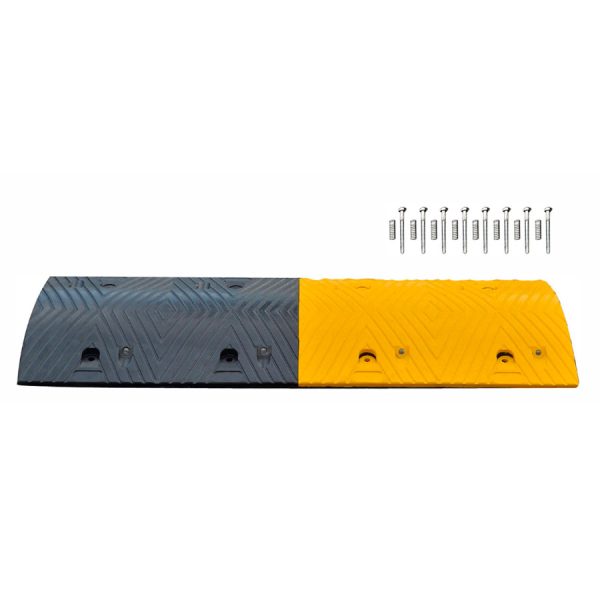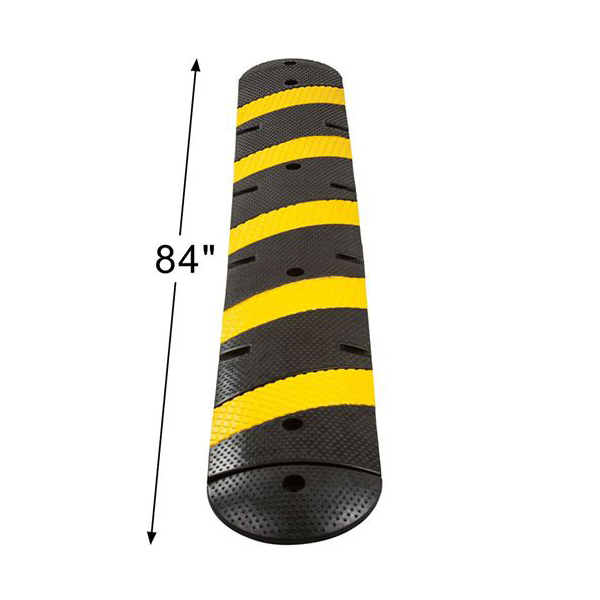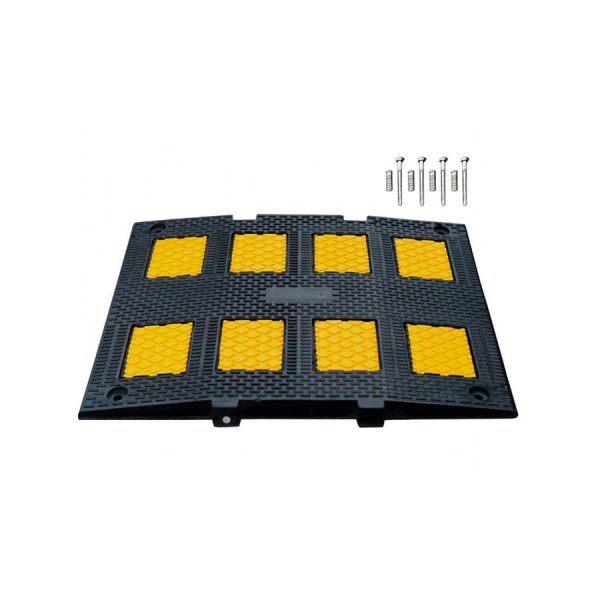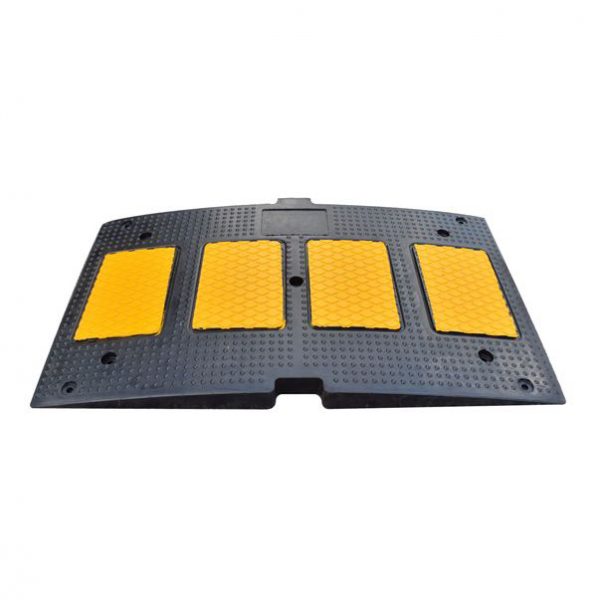Speed Bumps and Humps
Showing all 5 resultsSorted by latest
-
Premium Speed bumps
Price: $69.98/piece- Ideal for residential, commercial, industrial areas, parks, sporting venues, school zones, etc.
- Excellent to effectively slow down vehicle traffic.
- The end cap protects section ends from wear and tear.
- Durable bright rubber yellow section and en cap, great for visibility.
- Mounting screw NOT included. Select below if you want to add them to your order and if you need them for asphalt or concrete.
-
Rubber Speed Bumps – 6’ Super HD
Price: $73.90/pieceRubber Speed Bumps For Sale
- Ideal for residential, commercial, industrial areas, parks, sporting venues, school zones, etc.
- Excellent to effectively slow down vehicle traffic.
- The end cap protects section ends from wear and tear.
- Durable bright rubber yellow section and en cap, great for visibility.
Mounting screws INCLUDED. We are the only ones that include the hardware for free.BUY NOW -
Speed bumps for sale
Price: $69.98/piece- Ideal for residential, commercial, and industrial areas, as well as parks, sporting venues, and school zones.
- Excellent for slowing down vehicle traffic.
- End caps protect section ends from wear and tear.
- Durable yellow rubber section and end cap ensure high visibility.
- Mounting screws not included. You can add them to your order below, selecting the type needed for asphalt or concrete.
-
Speed Bumps for dirt roads and gravel roads. 2FT Wide
Price: $49.00/piece- Made out of heavy duty rubber material
- Excellent product to reduce vehicle traffic speed and increase safety
- Embedded yellow EPDM rubber for high visibility
- Perfect for any type of weather conditions, this product is very resistant, will not crack or break
- 4 Mounting Holes (1-1/8’D Countersink, 1/2’D Mount Hole)
-
Heavy Duty Rubber Speed Hump – Yellow / Black – Low Profile Speed Bump – Hardware Included
Price: $79.00/piece- Suitable to improve safety for parks, school zones, commercial areas, residential areas, industrial areas, sporting venues
- Specially designed to slow down vehicle traffic
- High quality rubber construction to improve durability, ideal for any type of weather conditions
- Bright yellow embedded EPDM rubber to improve visibility
- Male and Female end cap available to create 360° transitions
What are speed bumps?
Speed bumps are devices used to slow down traffic on roads and highways. They are typically made up of rubber and are designed to lessen the impact of a vehicle by absorbing some of the energy created by a car’s momentum.
How do speed bumps work?
When a vehicle passes over the rubber speed bumps, the rubber absorbs some of the energy created by the car’s momentum and this reduces the speed of the car significantly.
What is the purpose of speed bumps?
The purpose of rubber speed bumps is to slow down traffic on roads and highways to reduce the risk of accidents.
Are speed bumps effective?
Yes, rubber speed bumps are an effective way to slow down traffic and reduce the risk of accidents on roads and highways.
Speed bumps for sale
Check out the fantastic deals on speed bumps now available for sale!
You can purchase speed bumps with express delivery options and take advantage of bulk discounts. To learn more about our products or to request a personalized quote for larger orders, please contact our sales team.
High-quality speed bumps
High-quality speed bumps are traffic calming devices designed to slow down vehicles and improve road safety. They are typically installed in areas where speeding is a concern, such as residential neighborhoods, school zones, parking lots, and commercial areas. We offer you speed bumps that are engineered and constructed to meet specific standards to ensure effectiveness, durability, and minimal disruption to drivers.
Premium speed bumps factory
“Premium speed bumps” is not a standardized term, and the features of such speed bumps can vary depending on the manufacturer and specific use. However, premium speed bumps generally refer to high-quality, well-designed, and durable traffic calming devices that are often used in areas where safety and traffic management are of utmost importance. If you are looking for a speed bump maker or speed bumps suppliers in USA, you can trust us. Our rubber speed humps are designed to improve pedestrian safety and reduce the risk of accidents on residential streets, parking lots and driveways.
Heavy duty speed bumps
Heavy-duty speed bumps are robust traffic calming devices designed to withstand high levels of traffic, including large vehicles and trucks, while effectively reducing speed and enhancing road safety. These speed bumps are typically used in areas where heavy traffic is a concern, such as industrial zones, distribution centers, logistics hubs, and areas with significant truck or bus traffic.
Speed Bumps for Asphalt: Enhance Safety and Traffic Control
Unimat Traffic offers a wide variety of high-quality speed bumps for concrete or asphalt installations, designed to effectively slow down vehicles and improve safety in critical areas. Our speed bumps cater to various needs, providing durable and reliable solutions for:
- Residential neighborhoods: Create safer streets for children playing and pedestrians crossing.
- School zones: Ensure student safety during arrival, dismissal, and other school activities.
- Parking lots: Control traffic flow and protect pedestrians in busy parking areas.
- Commercial and industrial zones: Maintain safety standards and prevent speeding in designated zones.
Benefits of Choosing Unimat Speed Bumps for asphalt or concrete roads:
- Durability: Crafted from high-strength rubber, our speed bumps withstand heavy traffic and harsh weather conditions.
- Safety: Engineered to effectively slow down vehicles while minimizing impact on emergency vehicles and regular traffic flow.
- Visibility: Bright markings and optional reflectors enhance visibility, even in low-light conditions.
- Customization: Available in various sizes, and configurations to suit your specific needs.
- Easy installation: Designed for simple and efficient installation on concrete & asphalt surfaces.
Popular Speed Bumps Options:
- Standard Speed Bumps: Our classic option offers dependable traffic calming across various applications.
- Curb Mount Speed Bumps: Seamlessly integrate with existing curbs for a polished look and added stability.
- Modular Speed Bumps: Provide flexibility for customized layouts and easy reconfiguration.
Beyond the products:
- Expert guidance: Our team is available to assist you in selecting the right speed bump for your specific needs.
- Competitive pricing: We offer high-quality rubber speed bumps at affordable prices, ensuring value for your investment.
- Commitment to safety: We prioritize safety in all our products and services, contributing to a safer and more controlled traffic environment.
Browse our selection of speed bumps and humps today and find the perfect solution for your safety needs. Contact Unimat Traffic for expert advice and a free quote! Contact us for promotions or specials offers. Speed bumps from Unimat features portable/removable models.
Specializing in Wholesale Traffic Safety. Best Pricing On Speed bumps.




